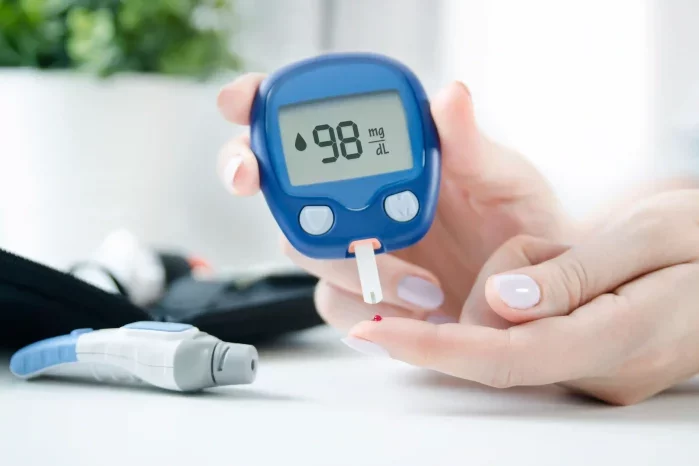Gestational diabetes mellitus (GDM) is a type of diabetes that develops during pregnancy and typically resolves after childbirth. It’s a condition that requires careful management to ensure the health of both the mother and the baby. The development of gestational diabetes is a significant concern because it can lead to various complications if left untreated. Understanding its symptoms is crucial for early diagnosis and management. In this article, we will explore two primary symptoms of gestational diabetes and delve into their implications for pregnant women.
Symptom 1: Excessive Thirst (Polydipsia)
One of the most common symptoms of gestational diabetes is excessive thirst, medically known as polydipsia. This symptom is often overlooked or attributed to normal pregnancy-related changes, but it can be an early indicator of gestational diabetes.
The Physiology Behind Excessive Thirst
Excessive thirst in gestational diabetes occurs due to elevated blood glucose levels. When the body’s insulin is not sufficient to regulate blood sugar effectively, glucose accumulates in the bloodstream. The kidneys work to filter this excess glucose out of the blood, which leads to increased urine production. As a result, the body loses more water, leading to dehydration. In response to dehydration, the body triggers the sensation of thirst, prompting the individual to drink more fluids.
During pregnancy, the body’s fluid needs increase naturally due to the growing demands of the fetus and the need for amniotic fluid. However, when excessive thirst is accompanied by other symptoms or is more intense than usual, it could be a sign of gestational diabetes.
Clinical Significance of Polydipsia
While thirst is a common experience during pregnancy, the intensity and persistence of this symptom in gestational diabetes can be concerning. If a pregnant woman finds herself constantly thirsty despite drinking adequate amounts of water, it may be a sign that her body is struggling to regulate blood sugar levels.
Unmanaged gestational diabetes can lead to chronic dehydration, which can have several adverse effects. Dehydration can decrease the volume of amniotic fluid, which is vital for the baby’s development. It can also lead to more frequent urinary tract infections (UTIs), a condition that is already more common in pregnant women.
Healthcare providers often use the presence of polydipsia, along with other symptoms, as a cue to conduct further tests, such as an oral glucose tolerance test (OGTT), to confirm a diagnosis of gestational diabetes. Early detection through symptoms like excessive thirst can significantly improve outcomes by allowing for timely intervention.
Managing Excessive Thirst in Gestational Diabetes
If excessive thirst is identified as a symptom of gestational diabetes, managing it involves controlling blood sugar levels. This typically includes dietary modifications, regular physical activity, and in some cases, insulin therapy.
Dietary changes are one of the first lines of defense. Pregnant women are advised to follow a balanced diet with controlled carbohydrate intake to manage blood glucose levels. Regular monitoring of blood sugar levels can help in adjusting the diet and insulin therapy as needed.
Physical activity also plays a crucial role in managing gestational diabetes. Exercise helps improve insulin sensitivity, allowing the body to use glucose more effectively, thus reducing the symptoms of high blood sugar, including excessive thirst.
In cases where lifestyle modifications are not sufficient to control blood sugar levels, insulin therapy may be required. Insulin helps lower blood glucose levels, reducing the kidneys’ need to filter out excess sugar and consequently decreasing the sensation of thirst.
Symptom 2: Frequent Urination (Polyuria)
Another significant symptom of gestational diabetes is frequent urination, or polyuria. Like excessive thirst, this symptom is often mistaken for a normal part of pregnancy, but it can signal an underlying issue with blood sugar regulation.
The Mechanism Behind Frequent Urination
Frequent urination in gestational diabetes is directly related to the body’s attempt to manage high blood sugar levels. When glucose levels in the blood are elevated, the kidneys filter out the excess glucose through urine. To excrete the glucose, the kidneys must produce more urine, leading to an increased frequency of urination.
This process is the body’s natural mechanism to prevent hyperglycemia (high blood sugar) from reaching dangerous levels. However, while this may temporarily lower blood sugar levels, it leads to dehydration and a cycle of excessive thirst and frequent urination.
During pregnancy, the growing uterus can also put pressure on the bladder, contributing to an increased need to urinate. However, when frequent urination is accompanied by other symptoms like excessive thirst or fatigue, it could indicate gestational diabetes.
Clinical Implications of Polyuria
Frequent urination can significantly impact a pregnant woman’s quality of life. It can lead to disruptions in sleep, as many women find themselves waking up multiple times during the night to urinate. This can contribute to fatigue, which is another common symptom of gestational diabetes.
More importantly, polyuria is a sign that the body is not managing blood glucose levels effectively. If left untreated, gestational diabetes can lead to serious complications for both the mother and the baby. For the mother, these complications can include an increased risk of preeclampsia, a potentially life-threatening condition characterized by high blood pressure. For the baby, risks include macrosomia (being born larger than normal), which can lead to delivery complications, and a higher likelihood of developing obesity and type 2 diabetes later in life.
Managing Frequent Urination in Gestational Diabetes
Managing frequent urination in gestational diabetes involves addressing the underlying high blood sugar levels. As with excessive thirst, this typically includes dietary changes, regular exercise, and possibly insulin therapy.
Dietary management focuses on controlling carbohydrate intake to prevent spikes in blood sugar levels. Smaller, more frequent meals can help maintain more stable blood glucose levels, reducing the strain on the kidneys and the need for frequent urination.
Staying hydrated is also crucial, despite the increased urination. Pregnant women should drink plenty of water to stay hydrated, but they should avoid sugary drinks that can further elevate blood glucose levels.
In cases where dietary and lifestyle changes are not enough to control blood sugar levels, insulin therapy may be required. Insulin helps regulate blood glucose levels, reducing the amount of glucose that the kidneys need to excrete through urine.
The Importance of Early Detection and Management
Both excessive thirst and frequent urination are significant symptoms of gestational diabetes that should not be ignored. While these symptoms can be mistaken for normal pregnancy-related changes, they can indicate a serious underlying condition that requires prompt attention.
Early detection of gestational diabetes is crucial for preventing complications. Pregnant women should be vigilant about any changes in their thirst and urination patterns and report these symptoms to their healthcare provider. Regular prenatal care, including glucose screening, is essential for identifying gestational diabetes early and managing it effectively.
Complications of Untreated Gestational Diabetes
If gestational diabetes is left untreated, it can lead to several complications for both the mother and the baby. For the mother, these complications can include:
Preeclampsia: This condition is characterized by high blood pressure and can be life-threatening if not managed properly. Gestational diabetes increases the risk of developing preeclampsia.
Increased Risk of Type 2 Diabetes: Women who have had gestational diabetes are at a higher risk of developing type 2 diabetes later in life.
Cesarean Delivery: Gestational diabetes can lead to macrosomia, or a larger-than-normal baby, which can make vaginal delivery more difficult and increase the likelihood of a cesarean section.
For the baby, potential complications include:
Macrosomia: Babies born to mothers with gestational diabetes are often larger than average, which can lead to delivery complications, including shoulder dystocia.
Neonatal Hypoglycemia: After birth, babies may have low blood sugar levels because their bodies produce extra insulin in response to the high blood sugar levels in the womb.
Respiratory Distress Syndrome: Babies born to mothers with gestational diabetes may have difficulty breathing after birth due to immature lungs.
Increased Risk of Obesity and Type 2 Diabetes: Children born to mothers with gestational diabetes are at a higher risk of developing obesity and type 2 diabetes later in life.
See also: What Causes Stillbirth In Gestational Diabetes
Conclusion
Gestational diabetes is a condition that requires careful management to ensure the health and well-being of both the mother and the baby. Symptoms like excessive thirst and frequent urination are early indicators of this condition and should not be overlooked. Early detection and management are key to preventing complications and ensuring a healthy pregnancy.
Pregnant women should be aware of these symptoms and report any concerns to their healthcare provider. With proper care, including dietary changes, regular exercise, and, if necessary, insulin therapy, gestational diabetes can be managed effectively, leading to positive outcomes for both mother and baby. Regular prenatal care and monitoring are essential for detecting and managing gestational diabetes, ensuring a healthy pregnancy and a safe delivery.
Related topics:
What Type of Diabetes is Gestational Diabetes?

























